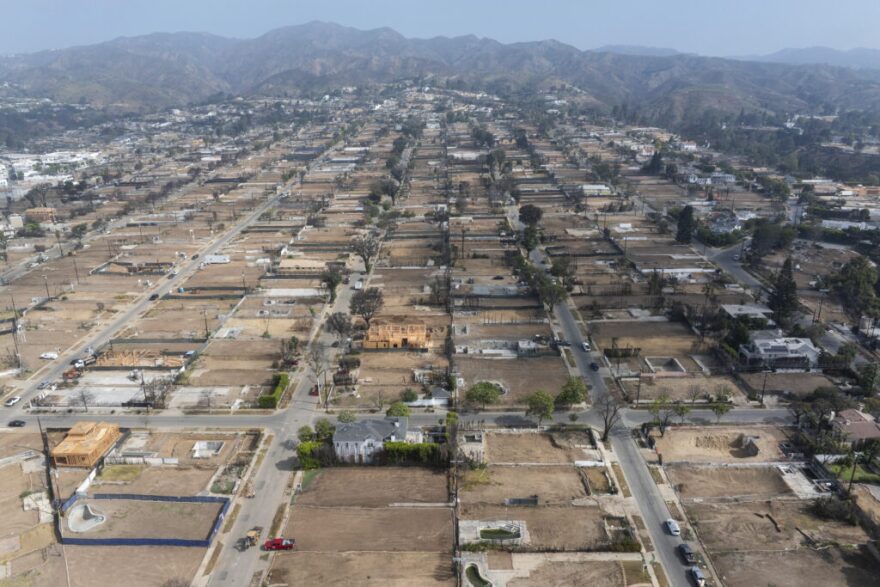Truth matters. Community matters. Your support makes both possible. LAist is one of the few places where news remains independent and free from political and corporate influence. Stand up for truth and for LAist. Make your year-end tax-deductible gift now.
Survey of 2,300 fire survivors reflects long, steep road to recovery

Extensive displacement, temporary housing funds rapidly running out, ongoing worries about contamination, a sense that the world has moved on. And yet, still, a widespread determination to rebuild. That’s the picture the latest survey of Eaton and Palisades fire survivors paints nearly a year after L.A. County’s most destructive fires.
In its third report, the nonprofit Department of Angels surveyed 2,335 people who were affected by the fires about how they’re doing nine months on. Some of the main findings include:
Join a webinar about the report tonight:
When: Wednesday, 6 p.m.
Where: Zoom. RSVP here.
- Roughly 8 in 10 Altadena residents and 9 in 10 Pacific Palisades residents still are not back home.
- The majority of survivors are digging into their savings and taking on debt.
- Temporary housing funds are running out for survivors — more than half of survivors have less than a year of remaining coverage or didn’t have any coverage at all.
- Survivors with lower incomes are facing choices over basic needs: More than 20% of survivors with incomes under $100,000 have had to cut back on food, and about 15% have had to skip medical care.
- Roughly a quarter of survivors want their homes or lots tested for contamination but have been unable to do it. The vast majority of tests that have been performed on homes that still stand have found contaminants above acceptable levels.
The report notes some key differences between the experience of survivors who completely lost their homes and those whose homes still stand, finding that those with homes still standing have had worse experiences with their insurers, more often having to fight to get claims approved, if they can get them approved at all.
Survivors with still standing homes also are more likely to run out of temporary housing assistance more quickly, the report says: “While 35% of those who experienced total loss have over one year of remaining coverage, fewer than 10% of those suffering structural and smoke or ash damage have more than a year remaining.”
Still, the majority of survivors have remained in L.A. County, but renters have been more likely to decide to permanently move from their fire-ravaged neighborhoods: Roughly 1 in 8 renters say they are permanently renting in a different area, according to the report.
For most survivors, the financial mountain they face after losing their homes is a barrier they may not be able to overcome, despite a fierce desire to return home and rebuild.
“Paying both mortgage and rent at the same time is going to make me and my family homeless,” one Altadenan writes in the report. “Supposedly, I make too much money to qualify [for assistance] but don't make enough money to survive.”
At the same time, the mental health effects of the fire remain potent. According to the report, 73% of survivors say their mental health has gotten worse, and 36% say it has gotten much worse since the fires.
“I've started having panic attacks and taking lorazepam,” wrote a Pacific Palisades survey respondent. “I've withdrawn from social interaction and am very depressed, wondering why I should put in the effort to go on.”
The report describes how “survivors of every demographic group, location and income level report similarly high levels of suffering.”
And nearly a year later, most survivors still are not close to rebuilding, with most not yet at the point of getting permits or hiring contractors. And most of those whose homes survived still are stuck in the limbo of remediation.
“This report is more than numbers — it is a window into the lives of survivors nine months after the fires,” Department of Angels cofounders Evan Spiegel and Miguel Santana write in the report. “We hope it serves as a guide for leaders and partners to align decisions, direct resources and design policies that meet families where they are.”











